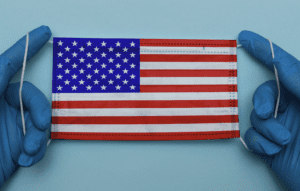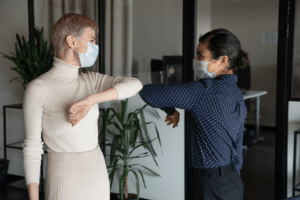02/23/21—To reap the benefits of in-person learning and maintain critical support services for students and families, the CDC reports that it is vital that schools are not only open as soon as possible but remain open. Many teachers want schools to get back to normal and question why, in many cases, they are not being prioritized to get the vaccine. The Biden administration has noted its support for moving educators to the front of the line, but these decisions are made at a local level per state guidelines. With educator vaccinations in question, White House press secretary Jen Psaki says the emphasis should be placed on other mitigating measures in the interim.
“Smaller class sizes, ensuring there are more school buses, having the equipment and the testing available — this costs money. And that’s why the passage of the American Rescue Plan — the $130 billion for schools — is so important to do,” said the White House coronavirus response coordinator Jeff Zients. This plan highlights reimbursement through FEMA’s Disaster Relief fund for schools incurring COVID-19 related expenses. It provides schools access to funds for improving social distancing, ventilation, hiring more staff, increasing transportation capacity on the K-12 level, and implementing public health protocols on college campuses.
With the emergence of new, more contagious variants, some experts predict a difficult road ahead in March and April. “Fewer cases means fewer opportunities for the variant to spread and fewer opportunities for new variants to emerge,” said Dr. Rochelle Walensky, the director of the US Centers for Disease Control and Prevention. “It is more important than ever for us to do everything we can to decrease the spread in our communities by increasing our proven measures that prevent the spread of COVID-19.”
The key, proven measures noted in the latest CDC guidance to reopen schools include contact tracing for isolation and quarantine, along with masking, maintaining distancing efforts, hand washing, and adequate cleaning and ventilation of facilities. When these five measures are utilized in tandem, the number of new cases is less than 5 per 100,000 in 2 weeks. Without any of these measures, new cases clock in at over 200.
AlertTrace makes it easy for schools to use contact tracing to limit spread every day and encourages social distancing. At the Center for Early Education in West Hollywood, the head of school, Reveta Brown, implemented the AlertTrace system to safeguard students and staff. “I was looking for something that I could use with 2-year-olds or 12-year-olds where the price point wouldn’t be so high,” said Bowers.
In addition to being simple and affordable, AlertTrace is designed to be the most scalable and reliable contact tracing system, providing businesses and organizations the data-driven support they need to remain open while prioritizing health and safety.
Electronic contact tracing means 99% less time needed to identify close contacts of positive cases, keeping unaffected teachers and students providing and receiving essential education while those exposed are quarantined. The AlertTrace system has led to improvements in adherence to COVID-19 guidelines of more than 80%, and with no tracking of location or GPS used, maximum privacy protection is ensured. Let us show you how AlertTrace will work for your organization when you schedule a demo today.




